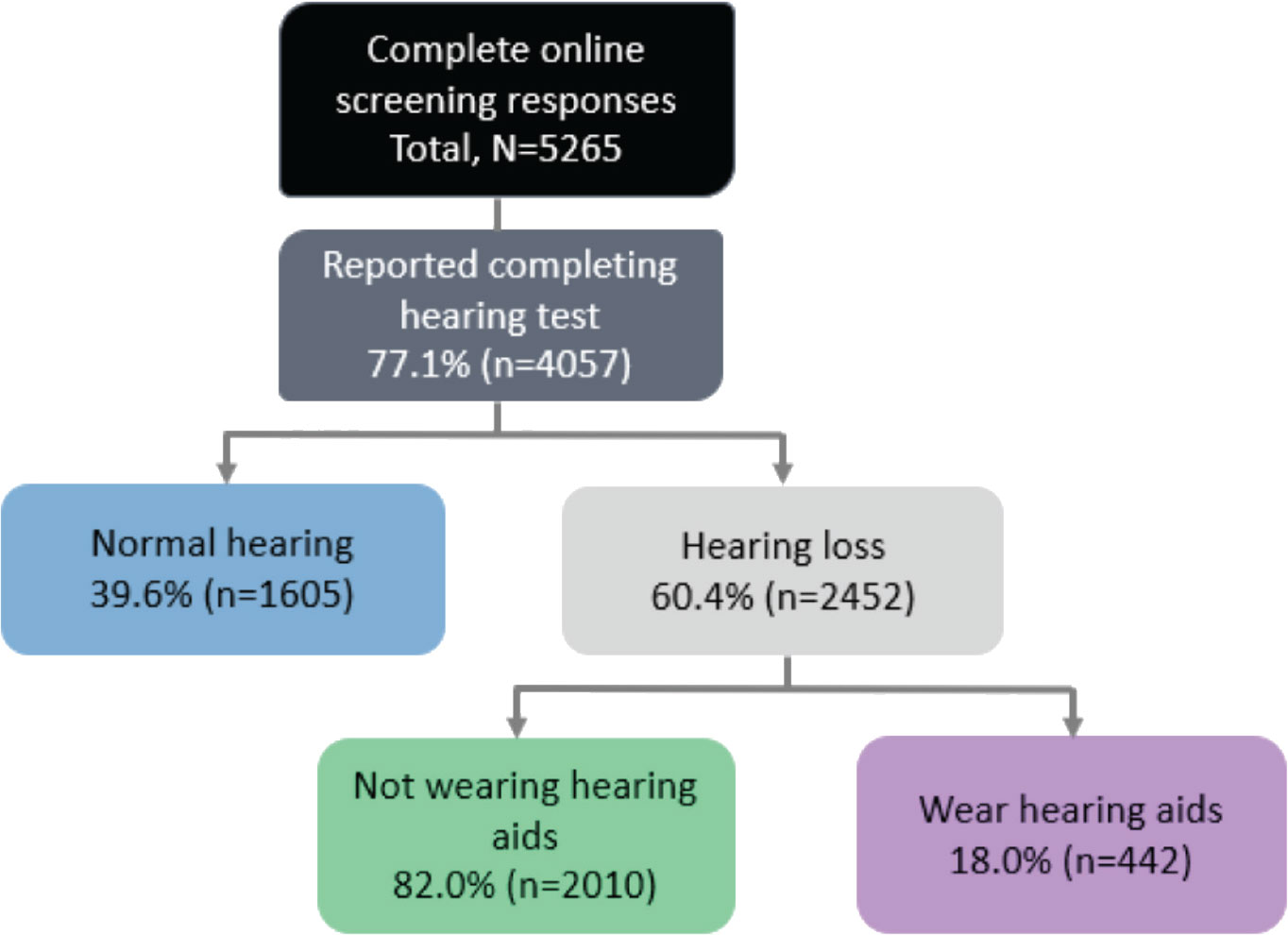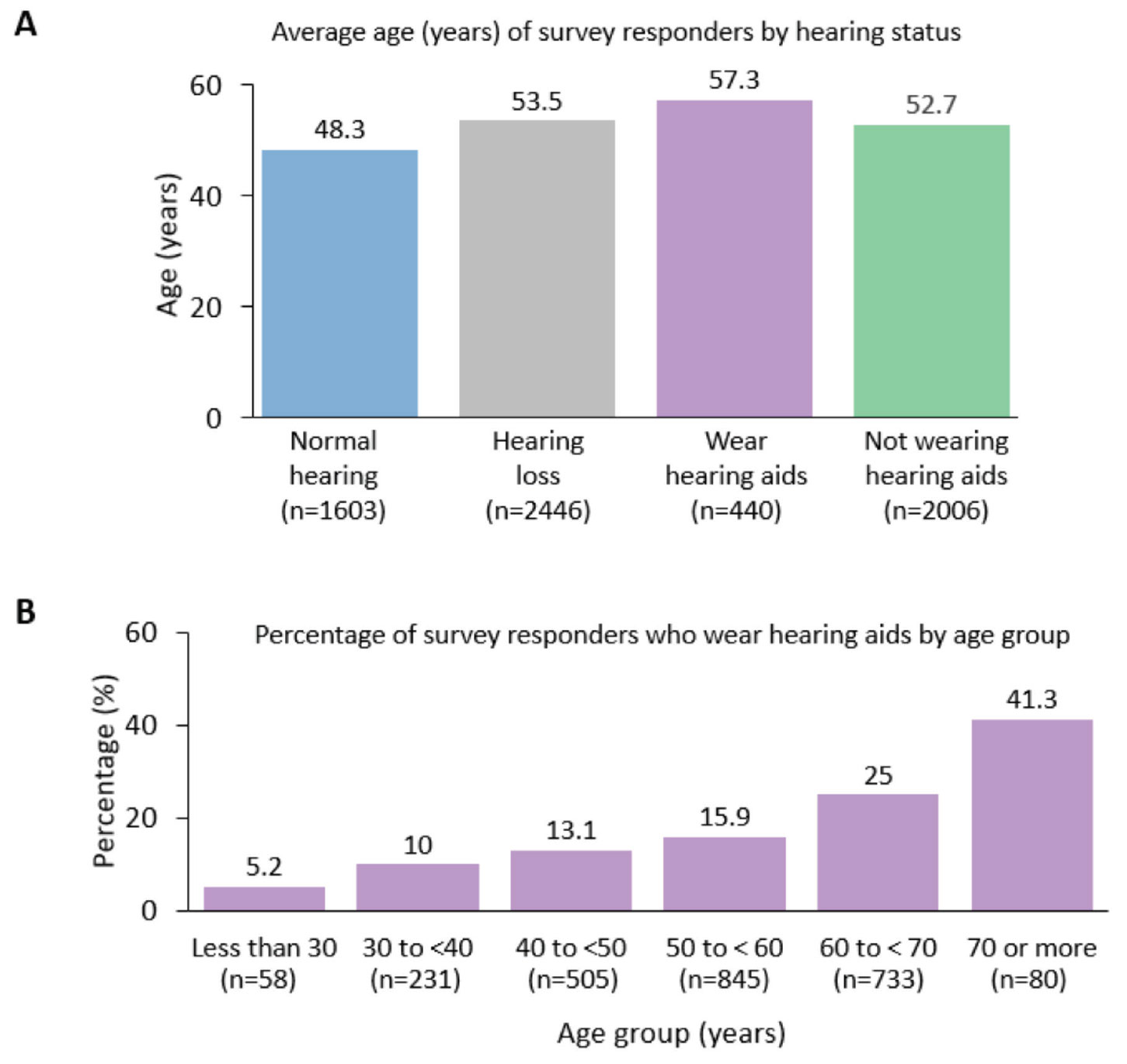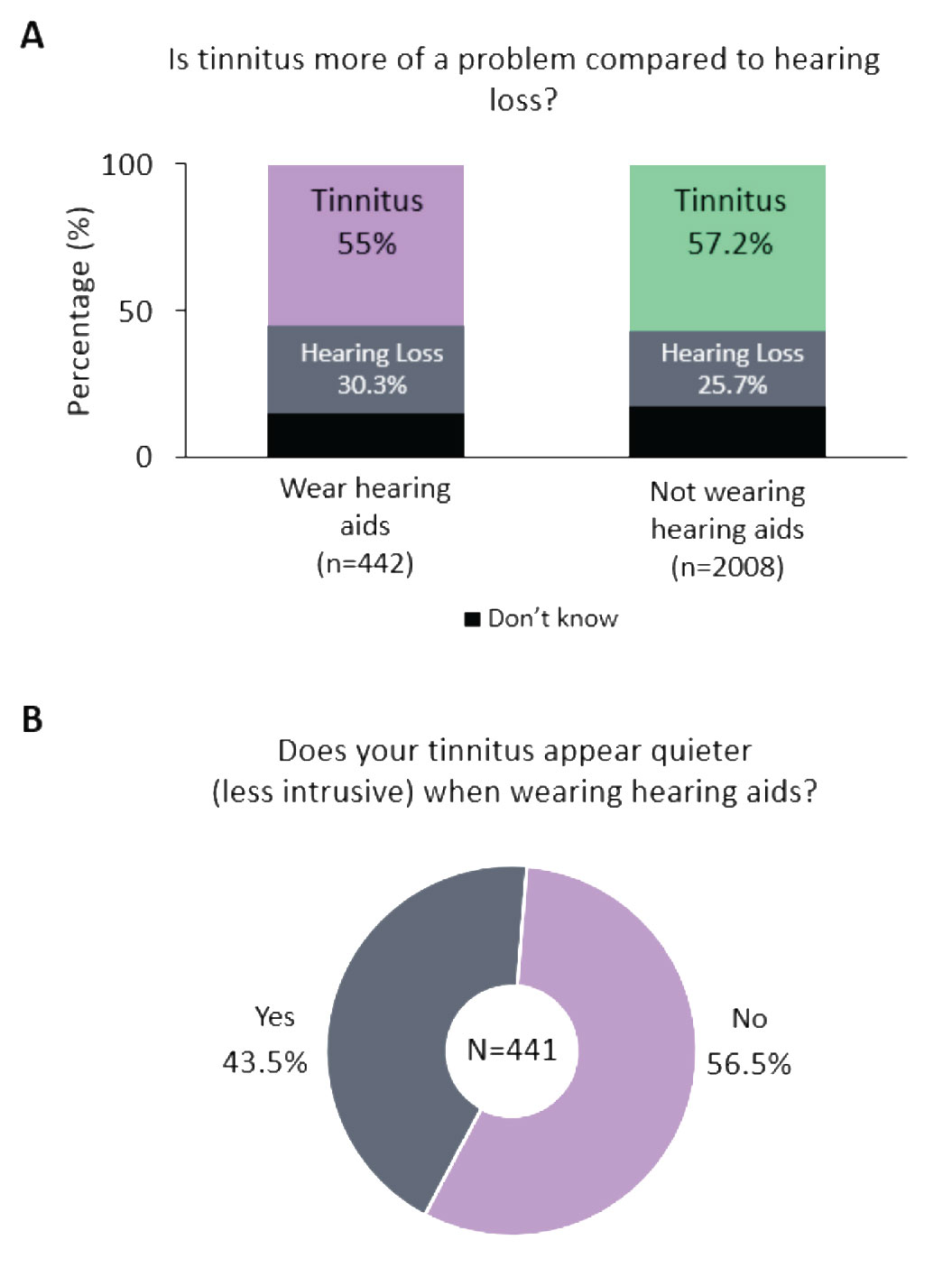
Treating Tinnitus Offers Many Patients Initial Access to their Lifelong Hearing Care Journey
Sook Ling Leong Ph.D., Kimberly Rawn
Tinnitus, the phantom perception of sound can be a debilitating condition.1,2 While tinnitus is generally related to hearing loss, tinnitus in normal hearing accounts for a significant group of patients.3,4 In normal hearing tinnitus patients, research has provided physiological evidence for deficits in cochlear processing (i.e., hidden hearing loss).5 Although there are several tinnitus treatment approaches put into use, ranging from hearing aids with masking programs to cognitive behavioral therapy (CBT), tinnitus continues to be a major health issue globally with limited treatment options that are consistently effective or accessible across sufferers.6,7
The Treatment Evaluation of Neuromodulation for Tinnitus Stage 1 (TENT-A1) was a parallel-arm, double-blind, randomized study investigating the safety and efficacy of three different stimulation settings of bimodal neuromodulation for the treatment of tinnitus (clinicaltrials.gov: NCT02669069) with the Lenire® device.8 Lenire is a non-invasive bimodal (sound and tongue) stimulation portable device that is FDA-approved in the United States and CE-marked in Europe for use in the treatment of chronic, subjective tinnitus. Detailed methods and results of the TENT-A1 clinical trial has been published in Science Translational Medicine.8
The TENT-A1 study recruitment prompted potential candidates to log on to the recruitment website to register their interest and complete an online screening which included a selection of assessments of their audiological profile, tinnitus, medical history, and demographics.
During the recruitment period, there were 5826 responses with 5265 participants providing complete analyzable data. Survey participants answered ‘yes’, ‘no’, or ‘don’t know’ to the questions ‘Have you had your hearing tested?’, ‘Do you have hearing loss in one or both ears?’ and ‘Is tinnitus more of a problem compared to hearing loss?’ Participants also responded, ‘yes’ or ‘no’ to the question ‘Does your tinnitus appear quieter (less intrusive) when wearing hearing aids?’
Of the 5265 potential candidates for the TENT-A1 clinical trial with analyzable data, 77.1% reported completing a hearing test, of which 39.6% had normal hearing and 60.4% had hearing loss (Figure 1). Further categorization of data demonstrated that, among tinnitus sufferers who were diagnosed with hearing loss, only 18% were using hearing aids (Figure 1). In the United States, the overall rate of hearing aid adoption has been reported to be 34.1%.9 In our survey, participants were not asked about the severity of their hearing loss or if they were recommended a hearing aid for their hearing loss, and as such the adoption rate reported in this study may be lower. The low uptake of hearing aids, in this cohort of tinnitus participants with hearing loss, could also be associated with a number of different factors. Although approximately 90% of tinnitus sufferers experience some degree of hearing loss,10 patients may not consider their hearing loss a barrier or a cause of concern to justify amplification. Studies have also shown that tinnitus patients lack the motivation to use hearing aids that were originally designed to address hearing loss or are influenced by stigma associated with the use of hearing aids.11,12 As detailed later in our survey, more than 55% of survey respondents reported that their tinnitus was more bothersome than their hearing loss.
Figure 1. Participant flow diagram of self-reported hearing status during online screening of the TENT-A1 clinical trial.

Regardless of hearing status, the mean age of tinnitus participants in this survey was 51.5 years. Survey findings were consistent with published data from the United States National Health Interview Survey where the mean age of adults who reported experiencing tinnitus in the prior 12 months to the interview was 53.1 years.13 In our survey, participants with hearing loss were on average slightly older than those with normal hearing (mean age; 53.5 years vs. 48.3 years; Figure 2A). Research has shown that sensorineural hearing loss in older adults is often accompanied by tinnitus with the highest occurrence around the age of 60 years.14
When categorized by age, 25% of participants in the 60 to 70-year-old group and 41.3% of participants in the 70 or older age group were using hearing aids (Figure 2B). At present, there is a lack of studies reporting the prevalence of hearing aid use among tinnitus sufferers. However, our results reflect a report that the average age of hearing aid owners in the United States overall population to be around 66 years old.9
Figure 2. A. Average age of survey responders by hearing status. B. Percentage of survey responders who wear hearing aids by age group.

Among participants with hearing loss, 55% of those who were using hearing aids and 57.2% of those who were not using hearing aids reported that tinnitus is more of a problem compared to hearing loss (Figure 3A). Of note, only 43.5%, of 441 participants who used hearing aids, reported that their tinnitus appeared to be quieter when wearing hearing aids (Figure 3B). In our survey, participants were not asked if their hearing aid included a tinnitus masking component. In a scoping review of hearing aids for tinnitus relief, positive results of hearing aids for tinnitus relief were shown in 19 out of 28 research studies, whereas 9 studies demonstrated no change in tinnitus perception.15 However, as stated by the authors of the scoping review, the quality of the evidence across studies was variable, and no consensus can be reached regarding the use of hearing aids as a treatment for tinnitus. In addition, a Cochrane meta-analysis of six clinical investigations (553 participants) of sound therapy found (including hearing aids with/out maskers) that the reduction in tinnitus severity or tinnitus loudness was equal to reductions seen in interventions using patient education or relaxation techniques.16
Figure 3. Categorical responses to A. “Is tinnitus more of a problem compared to hearing loss?” and B. “Does your tinnitus appear quieter (less intrusive) when wearing hearing aids?”

In summary, findings from our survey suggest that the majority (77.1%) of active tinnitus treatment seekers had their hearing tested. Moreover, a high percentage (60.4%) of patients who were diagnosed with hearing loss were seeking a solution for their tinnitus. The low adoption of hearing aids in this cohort (18%) is consistent with a report in a clinic providing a range of tinnitus management options where only 3% of all 297 patients who attended the clinic purchased hearing aids to treat their tinnitus.17 Also, in our survey, less than 45% of hearing aid users reported that their tinnitus appeared quieter when their hearing aids were in use, suggesting that the benefits of hearing aids in tinnitus sufferers could be limited.
It is important for audiologists to be able to offer a range of treatment options for a wide and diverse patient population, given the heterogeneity of tinnitus. For example, individuals with tinnitus and hearing loss may benefit from a wide range of treatments such as bimodal neuromodulation (Lenire), CBT or sound therapy. Depending on a patient’s profile and needs, Lenire may be used in conjunction with other therapies such as CBT. For those patients with tinnitus and aidable hearing loss, it is an appropriate opportunity for audiologists to provide solutions to their patients for all their audiological needs. In such cases, they can offer hearing aids to address their patient’s hearing loss while addressing their tinnitus with other treatment options such as Lenire, particularly for those that are still bothered by their tinnitus despite using a hearing aid. For those not ready to address their hearing loss yet, particularly the younger cohort that mostly report less or even no hearing loss, tinnitus treatment may be the first step in their life-long hearing care journey until they are either ready to treat their existing hearing loss or the hearing loss that generally follows early-onset tinnitus in this population. Tinnitus is a specialized area that should be seen as an adjacent segment that can be complementary and beneficial to the hearing loss segment as many patients can be helped earlier on in their hearing care journey, even if they are not yet ready for hearing loss treatments, as is depicted in Figure 4 below.
Figure 4. Lenire aims to address the tinnitus segment and should be seen as complementary to hearing aids for the treatment of tinnitus at an earlier stage of a patient’s lifelong hearing care journey.

References
- Baguley D, McFerran D, and Hall D. Tinnitus. The Lancet. 2013;382(9904):1600-1607.
- Heller AJ. Classification and epidemiology of tinnitus. Otolaryngol Clin North Am. 2003;36(2):239-248.
- Haile LM, Kamenov K, Briant PS, et al. Hearing loss prevalence and years lived with disability, 1990–2019: findings from the Global Burden of Disease Study 2019. The Lancet. 2021;397(10278):996-1009.
- Rauschecker JP, Leaver AM, and Mühlau M. Tuning out the noise: limbic-auditory interactions in tinnitus. Neuron. 2010;66(6):819-826.
- Schaette R, and McAlpine D. Tinnitus with a normal audiogram: physiological evidence for hidden hearing loss and computational model. Journal of Neuroscience. 2011;31(38):13452-13457.
- Cima RF, Maes IH, Joore MA, et al. Specialized treatment based on cognitive behavior therapy versus usual care for tinnitus: a randomized controlled trial. The Lancet. 2012;379(9830):1951-1959.
- Tunkel DE, Bauer CA, Sun GH, et al. Clinical practice guideline: tinnitus executive summary. Otolaryngology–Head & Neck Surgery. 2014;151(4):533-541.
- Conlon B, Hamilton C, Hughes S, et al. Bimodal neuromodulation combining sound and tongue stimulation reduces tinnitus symptoms in a large randomized clinical study. Science Translational Medicine. 2020;12(564):eabb2830.
- Jorgensen L, and Novak M. Factors influencing hearing aid adoption. Seminars in Hearing; 2020;Vol.41, No.01:006-020. Thieme Medical Publishers.
- American Tinnitus Association (ATA) website. https://www.hearingloss.org/wp-content/uploads/HLAA_HearingLoss_Facts_Statistics.pdf?pdf=FactStats.Accessed May 12, 2023.
- Ruusuvuori JE, Aaltonen T, Koskela I, et al. Studies on stigma regarding hearing impairment and hearing aid use among adults of working age: a scoping review. Disabil Rehabil. 2021;43(3):436-446.
- Wallhagen MI. The stigma of hearing loss. The Gerontologist. 2010;50(1): 66-75.
- Bhatt JM, Lin HW, and Bhattacharyya N. Prevalence, severity, exposures, and treatment patterns of tinnitus in the United States. JAMA Otolaryngology–Head & Neck Surgery. 2016;142(10):959-965.
- Zagólski O. Management of tinnitus in patients with presbycusis. International Tinnitus Journal. 2006;12(2):175.
- Jacquemin LA. Gilles A, and Shekhawat GS. Hearing more to hear less: a scoping review of hearing aids for tinnitus relief. International Journal of Audiology. 2022; 61(11):887-895.
- Hobson J, Chisholm E, and El Refaie A. Sound therapy (masking) in the management of tinnitus in adults. Cochrane Database Syst Rev. 2012;11(11): Cd006371.
- Hamilton C, Sayers A, and MacMahon H. Treating tinnitus across a broad patient population requires multiple management options beyond just hearing aids. Audiology Practices. 2023;15(1) ■
Sook Ling Leong, PhD, is Scientific Communications Manager at Neuromod Devices in Dublin, Ireland.
Kimberly Rawn is a healthcare writer and marketer with 15 years of experience in the hearing health industry
